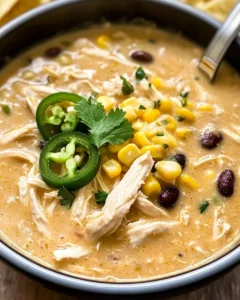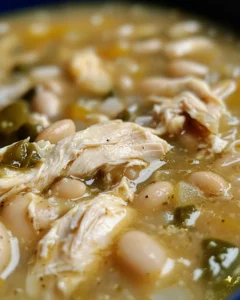Preparing Your Salmon
Choosing the Right Salmon
Before you even preheat your oven, the first step to baking the perfect salmon starts at the market or fish counter. The choice between wild and farmed salmon isn’t just about taste—it’s about understanding the nuances that each type brings to your dish. Wild salmon, with its robust flavor and firmer texture, is often hailed as the connoisseur’s choice. On the flip side, farmed salmon offers a fattier profile, which can translate to a more forgiving nature during the baking process. Remember, the fresher, the better. Look for vibrant color, a clean smell, and firm flesh to ensure you’re taking home a top-notch piece of fish.
Preparing Ingredients and Quantities
Now, let’s talk ingredients. For a basic bake, you’ll need:
- 1 lb of salmon fillet
- Salt and pepper, to taste
- 2 tablespoons of olive oil or melted butter
- Optional: lemon slices, herbs (dill, parsley), garlic, or your preferred seasonings
This simple setup is your canvas; feel free to get creative with marinades and seasoning options. Just remember, the goal is to enhance, not overpower, the natural flavors of the salmon.
Marination and Seasoning Options
Marinating your salmon can add depth and complexity to its flavor. A basic marinade might include olive oil, lemon juice, garlic, and herbs. Let your salmon sit in this mixture for at least 30 minutes before baking. However, don’t marinate for too long—especially if your marinade is acidic—as it can start to “cook” the fish, affecting its texture.
As for seasoning, simplicity often reigns supreme. A generous sprinkle of salt and pepper may be all you need. Yet, for those looking to experiment, incorporating a blend of spices or a rub can transform your dish. Think of combinations like brown sugar and mustard for a sweet and tangy crust, or a mix of smoked paprika, garlic powder, and onion powder for a smoky kick. Blackened Salmon Salad Recipe
With your salmon chosen, prepared, and seasoned, you’re ready to move on to the actual baking. This next step is where the magic happens, turning your carefully prepared ingredients into a mouth-watering meal that’s sure to impress. Stay tuned as we dive into the art of mastering the oven in the next section of our guide.
Mastering the Art of Baking Salmon
Oven Temperature and Preheating
One of the keys to baking salmon to perfection lies in the oven temperature. Preheating your oven is a must – this ensures that your salmon cooks evenly from the moment it hits the rack. A sweet spot for baking salmon is around 375°F to 400°F. This range is hot enough to cook the salmon thoroughly and quickly, locking in moisture and flavor, without risking drying it out.
Placement in the Oven
Where you place your salmon in the oven can also affect its cooking. For even baking, position your salmon fillet in the middle of the oven. This allows the heat to circulate evenly around the fish. If your oven has hot spots, rotate the baking sheet halfway through cooking to ensure uniform doneness.
To Cover or Not to Cover
This is where personal preference and technique come into play. Covering salmon with foil can create a steamy environment, ensuring the fish stays moist. It’s particularly useful if you’ve added a marinade or want to infuse the salmon with the flavors of herbs and spices. On the flip side, baking uncovered, especially with a light brushing of oil or a glaze, can give the salmon a slightly crisp exterior. If you’re after that golden top, consider broiling the salmon for the last few minutes of cooking, watching closely to avoid overcooking.
With these techniques in your culinary toolkit, you’re well on your way to baking salmon that’s not just good, but great. Remember, the best dishes come from not just following recipes, but understanding the hows and whys behind each step. Next, we’ll tackle the crucial signs that indicate your salmon is perfectly baked, ensuring you never have to face the disappointment of dry, overcooked fish again. Stay tuned as we delve into the indicators of doneness that are sure to make your next salmon dish a masterpiece.
How to Tell When Your Salmon is Perfectly Baked
The Flake Test
One of the most reliable methods to check if your salmon is done is the flake test. Gently insert a fork into the thickest part of the salmon and twist slightly. If the salmon flakes easily, without resistance, it’s ready. This method is foolproof and gives you a clear indication of doneness without the need for any special tools. However, it’s crucial to perform this test gently to avoid breaking the salmon apart. How long to bake salmon at 400
Internal Temperature Guide
For those who love precision, using a digital thermometer can take the guesswork out of baking salmon. The FDA recommends an internal temperature of 145°F for fish to be considered safe to eat. Insert the thermometer into the thickest part of the fillet to get an accurate reading. Keep in mind that the salmon will continue to cook slightly after it’s removed from the oven, a phenomenon known as carryover cooking, so you might want to pull it out just shy of the target temperature.
Color and Texture Indicators
Visual cues can also guide you to perfectly baked salmon. Look for a change in color from translucent (raw) to opaque (cooked), and pay attention to the texture. The salmon should feel slightly firm to the touch but still give a little under pressure, indicating it’s cooked through but retains moisture. Overcooked salmon, on the other hand, feels tough and dry.
Armed with these tips, you’re now equipped to bake salmon that’s just right – moist, flaky, and full of flavor. Remember, practice makes perfect, and each salmon fillet you bake is an opportunity to refine your technique. Next, we’ll explore common pitfalls in the salmon-baking process and how to avoid them, ensuring your culinary journey is as smooth and successful as possible. Honey Glazed Salmon Recipe
Avoiding Common Pitfalls in Baking Salmon
Overcooking and Dryness
Perhaps the most common mistake when baking salmon is leaving it in the oven for too long. Overcooked salmon not only loses its delicate texture but also its juicy flavor, leading to a less enjoyable dining experience. To avoid this, keep a close eye on the cooking time and use the methods mentioned earlier to test for doneness. Remember, it’s better to err on the side of slightly undercooked salmon, as it will continue to cook from residual heat once removed from the oven.
Underseasoning or Overseasoning
Finding the right balance of flavors can make or break your salmon dish. Underseasoning will leave your salmon tasting bland, while overseasoning can overpower the natural flavors of the fish. Start with a light hand, especially with salt and bold spices, and remember you can always add more seasoning after tasting the cooked salmon. Utilizing fresh herbs and a squeeze of lemon can also enhance the salmon’s flavor without overwhelming it.
Incorrect Foil Use
Using foil when baking salmon can be a double-edged sword. While it’s great for keeping the salmon moist and infusing it with flavors from herbs and spices, wrapping the salmon too tightly in foil can steam the fish too much, altering its desired texture. On the other hand, not using foil when it could benefit from a bit of moisture can lead to dryness. The key is to loosely tent the salmon with foil if you choose to use it, allowing space for heat circulation.
By steering clear of these common pitfalls, you’re well on your way to consistently baking perfect salmon. Each of these mistakes is a learning opportunity, helping you refine your technique and develop a deeper understanding of the baking process. Next, we’ll move on to the final touches that will elevate your salmon from simply cooked to truly gourmet, including resting, serving, and pairing suggestions.




